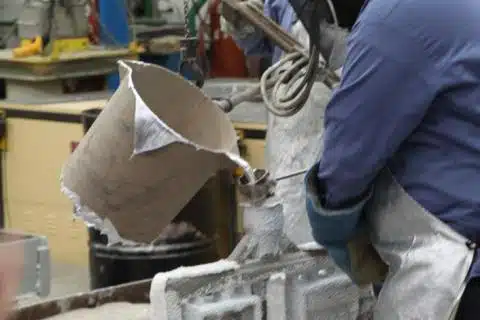
Investment Casting is a cost effective method for the production of precise, near-net-shape and complex metal parts. Although Investment Casting is relatively ancient in origin it is today a highly sophisticated manufacturing process.
By definition Investment Casting is a foundry process by which a metal casting is produced from a ceramic mold that was formed by a disposable pattern. Much as Sand Castings are produced from sand molds and Die Castings from metal dies, the Investment Casting process name originates from the ceramic “Investment” in which parts are cast.
There are eight basic steps for the manufacture of an Investment Casting:
- The first step of the process is the production of a Disposable Pattern. Generally Investment Casting patterns are made of Wax and produced by an aluminum injection mold. However, Investment Casting patterns might alternatively be produced from a rubber or soft metal molds or formed by an Additive Manufacturing process such as SLA,SLS, or Voxeljet.
- Once the wax pattern has been formed it is attached to a Runner System. The runner system is also comprised of wax that is cut to size from injected or extruded stock and is “wax-welded” together. A complete and “Assembled” part & runner system is referred to as a “Sprue” or “Tree” and may be comprised of many multiple Wax Patterns.
- The Assembled wax Sprue is then ready to be “Invested” or coated with ceramic. The most prevalent method to “Invest” a wax sprue is theCeramic Shell Process. In the Ceramic Shell Process a sprue will dipped multiple times into vats of specialized slurry and refractory sand to form a Shell. The shell is allowed dry time after each layer is applied and once a sufficient layers of ceramic have been applied to the sprue the completed shell is allowed to dry fully.
- Once the shell is dry a DeWax operation is performed, generally with a steam autoclave, to melt and eliminate the wax from the sprue.
- With the wax removed the shell is Fired in an oven to create a crystalline ceramic structure that will withstand the weight and thermal shock of the metal to be cast into it.
- Once the shell has been fired molten metal is then Cast to fill the cavities in the sprue that had been formed by the wax pattern & runner system.
- After the metal has solidified the ceramic is removed from the Sprue with high pressure water or some other form of knockout system.
- With the ceramic removed the metal parts are cut–off from their runner system with a saw or other cutting method such as a laser.
Any number of additional operations might be performed, such has heat treatment, straightening, Non-Destructive Testing, etc., once a part is in metal. Although the manner in which they are performed will vary between manufacturers, the Investment Casting process always requires these same eight basic steps.
